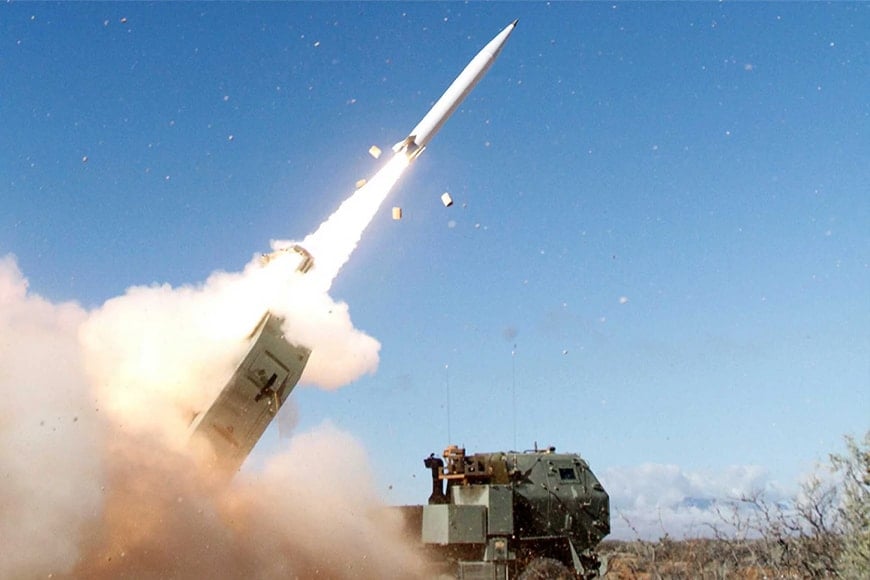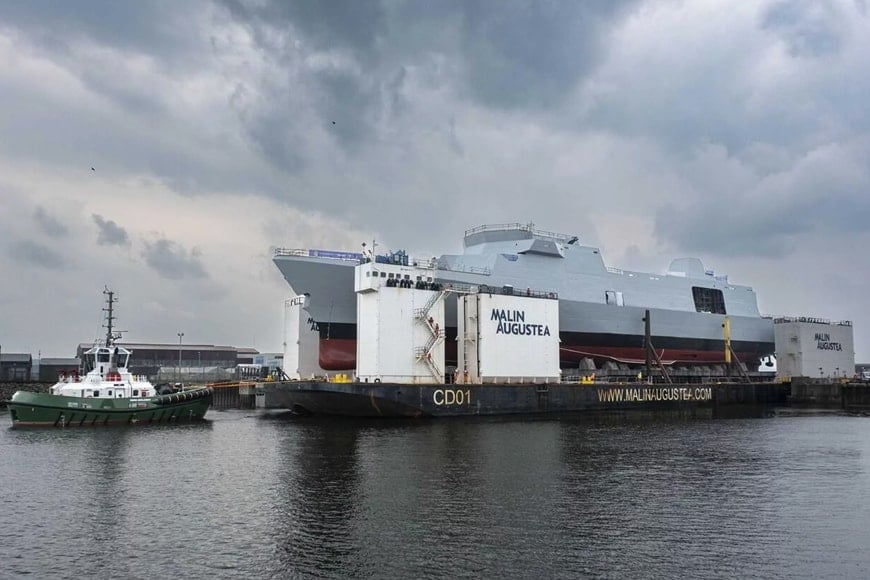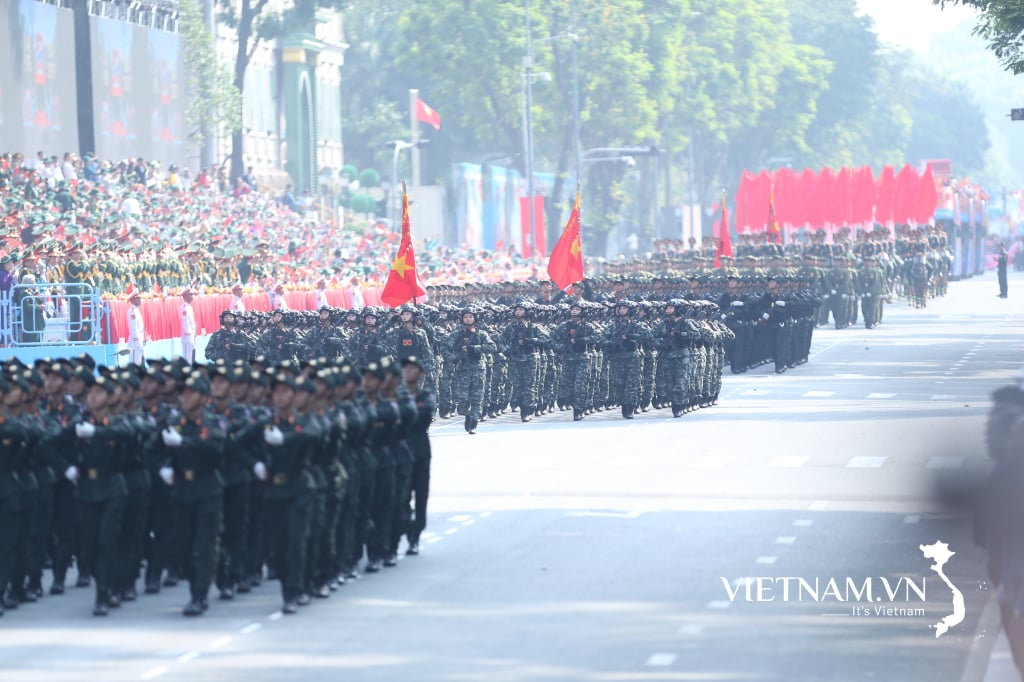* Australia, US cooperate to develop and produce PrSM missiles for HIMARS
The Australian Government has signed a new Memorandum of Understanding with the United States to establish a joint program to develop precision strike missiles (PrSMs), the Australian Department of Defence has announced. This strategic agreement marks a significant step forward in enhancing the long-range strike capabilities of the Australian Defence Force (ADF) and strengthening the defence industry partnership between the two countries.
 |
The PrSM missile is a new generation of surface-to-surface weapons, designed to provide long-range fire with high accuracy, and can be launched from HIMARS or M270 rocket artillery systems. Photo: US Department of Defense |
The PrSM is the US Army's newest long-range precision strike weapon, designed to replace the aging ATACMS tactical missile system. The PrSM has a longer range, faster response time, greater accuracy and superior survivability. Capable of engaging high-value targets at ranges of over 500km, the missile can target enemy air defenses, logistics centers and command facilities. The PrSM can be launched from the M142 HIMARS and M270 multiple launch rocket systems.
Compared to the older ATACMS and standard guided rockets launched by HIMARS, the PrSM represents a quantum leap in long-range strike capability. The PrSM’s range has been increased from approximately 300km to 500km in the initial version, with future versions expected to reach 700km or more, allowing the ADF to strike critical targets deep in contested areas while keeping the HIMARS system safely out of range of enemy attack.
* China develops new variant of Type 99A tank
Recently, Chinese social media has spread information that the country is developing a tank model using a diesel-electric hybrid engine. This design is intended to enhance stealth, mobility and energy efficiency. This platform seems to be specifically designed for high-altitude combat environments, where traditional engines are no longer effective.
 |
Hybrid tanks fit Beijing's strategy to assert its presence on multiple battlefields. Photo: X.com |
The new tank incorporates a diesel-electric hybrid system, combining a traditional internal combustion engine with an electric motor and an integrated battery to gain several advantages on the battlefield. Unlike traditional tanks that rely entirely on fuel-consuming internal combustion engines, this dual-power configuration allows for smoother handling, instantaneous torque, and the ability to support power-hungry systems such as laser weapons, electronic warfare systems, and active defense modules. These features are not only technologically innovative, but also provide a decisive advantage in urban, ambush, and high-altitude combat, where stealth and endurance are key.
The new tank is said to be based on the Type 99A, China's most advanced main battle tank. The Type 99A is equipped with a 120mm smoothbore gun with an autoloader, composite and modular armor, and a 1,500-horsepower diesel engine that can reach a top speed of over 80km/h. Over the years, the tank has been upgraded with advanced fire control systems such as thermal sensors and laser rangefinders, allowing for precision engagement at distances of up to 5,000m.
The move to a hybrid version helps China address some of the bottlenecks in traditional tank designs. Hybrid engines allow for quiet movement, making them harder to detect by acoustic sensors and unmanned aerial vehicles (UAVs). The vehicle also reduces its heat and radar signature, increasing its survivability. The hybrid platform is likely designed to run high-power systems without sacrificing the performance of the main engine, an advantage over Western designs.
* HMS Venturer Type 31 destroyer completes launching procedure
According to a photo recently published on social networking site X, the Royal Navy is said to have successfully launched HMS Venturer, a Type 31-class destroyer (also known as the Inspiration class), at Leith Port.
 |
The destroyer HMS Venturer is transported by barge CD01 from Rosyth to Leith for launching procedures. Photo: X.com |
The ship was moved from Babcock’s Rosyth dockyard on barge CD01. The successful launch of HMS Venturer brings the ship closer to completion and entry into service, strengthening the Royal Navy’s ability to maintain a resilient and resilient presence across the globe.
The Type 31 destroyers are designed as multi-role warships, capable of supporting a wide range of missions, from maritime security and disaster relief to intelligence gathering and international defense cooperation. In terms of combat capabilities, the Type 31 is equipped with the Sea Ceptor air defense missile system to protect against air threats. In the future, the ship can be integrated with 32 Mk 41 vertical launch tubes, allowing the use of a variety of missiles, including Tomahawk cruise missiles for ground attack missions.
For close combat situations, the ship is equipped with a main gun Bofors 57mm Mk 110 and two Bofors 40mm Mk 4 secondary guns to counter surface threats and high-speed ships. The ship also has a flight deck and hangar for Merlin or Wildcat helicopters, enhancing anti-submarine and anti-surface ship capabilities.
QUYNH OANH (synthesis)
* Today's World Military column on the People's Army Electronic Newspaper sends readers the latest information on world military security and defense activities in the past 24 hours.
Source: https://baodaknong.vn/quan-su-the-gioi-hom-nay-11-6-australia-my-hop-tac-phat-trien-va-san-xuat-ten-lua-prsm-cho-himars-255194.html





























![[Photo] The 9th Congress of the Party Committee of the Office of the President, term 2025-2030](https://vphoto.vietnam.vn/thumb/1200x675/vietnam/resource/IMAGE/2025/6/20/78e7f27e8c4b4edc8859f09572409ad3)


























![[Maritime News] Wan Hai Lines invests $150 million to buy 48,000 containers](https://vphoto.vietnam.vn/thumb/402x226/vietnam/resource/IMAGE/2025/6/20/c945a62aff624b4bb5c25e67e9bcc1cb)











































Comment (0)